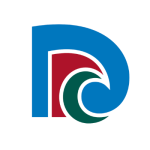Water shortages, restrictions possible, NRC warns
Northland’s district councils, major industries and consented water users are being urged to closely monitor their water use and prepare for possible shortages and restrictions unless there is significant rain over the next month or two.
Dry conditions in the Hikurangi area during Northland's 2010 drought. Officials are warning of a lack of rain this summer too.
Dale Hansen, Water Resources / Hydrology Programme Manager for the Northland Regional Council, says rain over the past several months has been significantly lower than usual in many parts of Northland.
“‘This month has also has been dry with low rainfall amounts, high temperatures and persistent westerly winds resulting in low soil moistures and reduced water resources.”
Mr Hansen says low soil moisture levels are likely to continue and river flows and ground water levels are expected to recede further throughout February and March if the region does not receive sufficient rain.
That puts a number of areas at risk of potential water shortages, including western areas of Kaipara from Kaihu to Pouto Point, the central areas south of Kaikohe and west of Whangarei, and Bream Bay and the southern Kaipara districts. (Moderate to significant rain which fell in the Far North and eastern parts of the region in late December meant things were not as serious there at this stage.)
Mr Hansen says realistically, many parts of Northland will need about 80 to 100mm of rain – effectively the average monthly rainfall for February - over the next few weeks to ease the situation and avoid water shortages and possible restrictions.
“The regional council is encouraging Northlanders in affected areas to conserve water wherever practical and prepare for possible water shortages and restrictions.”
With that in mind, the regional council has today (subs: Fri 25 January) begun sending out letters to about 400 water use resource consent holders urging them to closely monitor their water use.
Those consent holders range from private individuals taking several thousand litres a day to some major users taking hundreds of thousands of litres, including Northland’s district councils and major industries.
Mr Hansen says as well as urging the consent holders to conserve water, they’re also being asked to ensure their water use, stream flows, groundwater and lake levels are closely monitored in accordance with their consent conditions.
The regional council is also encouraging them to plan for shortages, including investigating alternative supplies or the possibility of water rationing, to ensure they meet consent conditions if things don’t improve over the coming weeks.
He says the regional council will continue to closely monitor rainfall, groundwater levels and stream flows around Northland and updated affected parties as required. This would include regular contact with district councils which were responsible for town water supplies.
Meanwhile, despite the regional council’s early call for restraint with water use, Mr Hansen there was no need for alarm at this stage and it was simply taking a sensible, precautionary approach.
“This is a heads-up; it’s about giving people the information they need to ensure they’re prepared early and thinking ahead.”
Mr Hansen says information on rainfall, river levels and flows can be found on the council’s website via: www.nrc.govt.nz/riversandrain
The website is automatically updated every two hours to provide the most up-to-date information.
